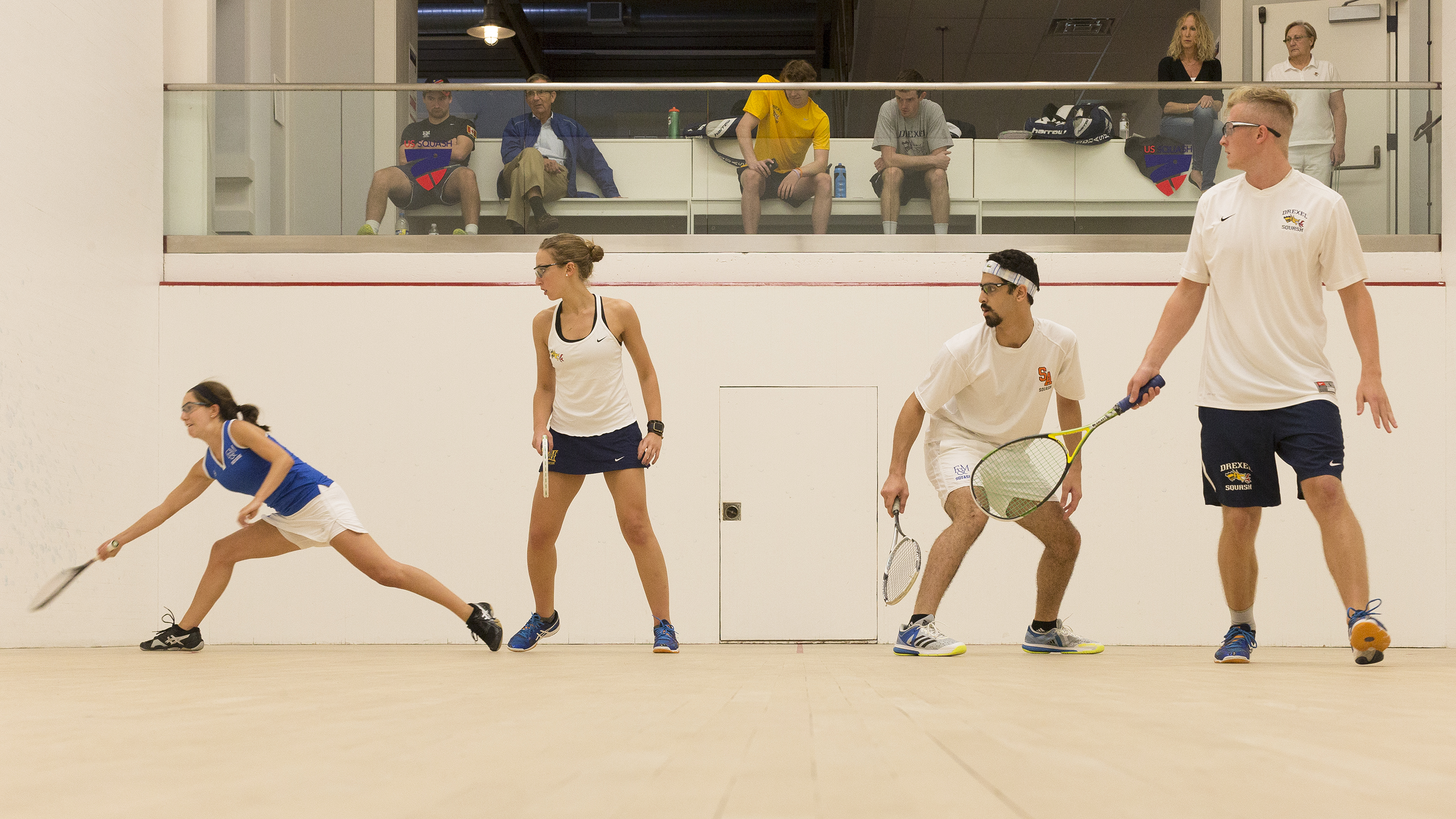
by Preston Quick
In this month’s issue, former World Champion Preston Quick describes the unique lingo and skills it takes to excel at every level of squash doubles.
C
Players at the C level will benefit greatly from a focus on the fundamentals; cross courts should hit the side wall more often, use the height of the court to lift the ball over their opponents, and hitting to the front court when the other team is behind them. Instead of going for an early rally-ending shot, they should work on putting their opponent in a position of weakness. Players should pay attention to their position on the court, learning to rotate with the other team to be in a clear position to play the shot when it is their turn. While every player naturally has a stronger side, this is also a great time to experiment by playing both on the right and left wall, getting more comfortable as you gain experience. The down-the-middle shot is surprisingly useful to create confusion for the opposing team. Players at this level should also start being more aggressive with their first serve, and volleying the serve return more frequently to avoid getting in trouble in the back corners.
B
Players at this level begin using the reverse corner (a crosscourt shot directed to the farthest front corner) and the three-wall more effectively. They are able to adjust to different styles of play, such as high-pace or shot-making. B players should look to use their serve and return as a weapon. Crosscourt shots for B players usually hit the side wall before opponent is able to make contact. They are confident volleying at any time. Players start to comfortably cover for their partner when in trouble and even change sides if necessary. They communicate verbally with their partner more regularly both during and between points. Fewer lets occur due to positioning. Players are more efficient with movement by allowing the ball come to them instead of over running. B players start to think at a tactically deeper level, such as isolating a weaker opponent on the opposing team.
A
A players volley with ease and let a wide ball pass them for their partner to hit, and then cross over to the side wall comfortably when a ball goes to the back. They defend effectively, including use of the lob, skid boast (a high boast that travels to the opposite back corner), and Philadelphia shot (also known as a cork screw—an extra-wide high crosscourt that hits the opposite side wall and comes deep to the striker’s side). These players have fewer weaknesses due to technique and footwork. Players anticipate their opponents’ attacking opportunities. They may use different spins to keep their opponent on their toes. Crosscourt shots will break on the side wall at different heights, speeds and angles. They have a clear understanding who will play a ball in the middle of the court without verbal communication. A players will earn the right to end the point by moving opponents out of position before hitting a winner. They have an advanced court sense and are generally aware of the positions of the other three players.


